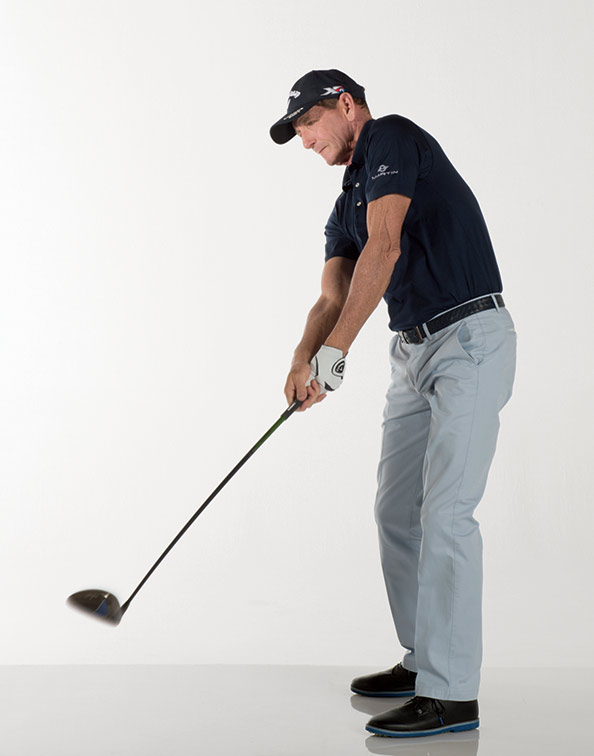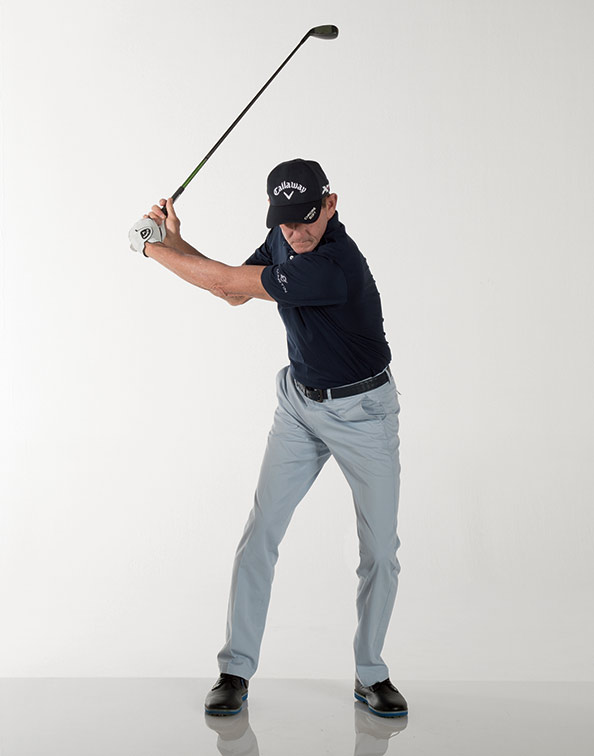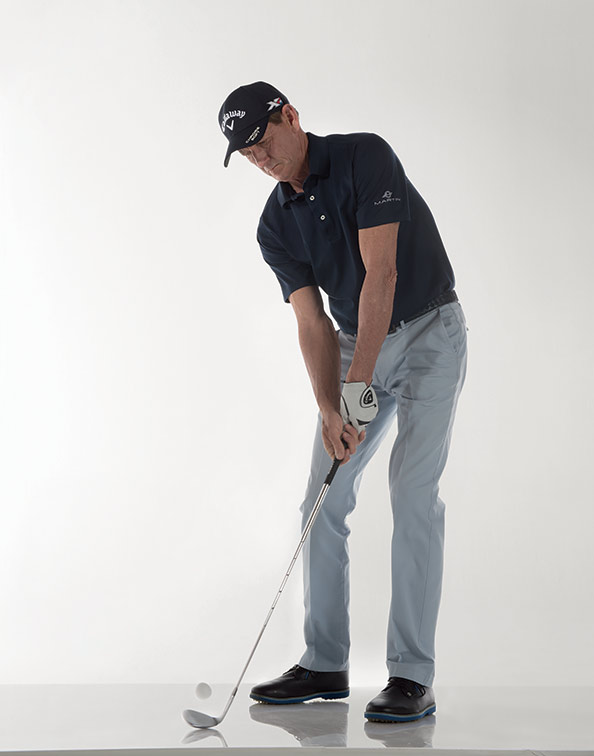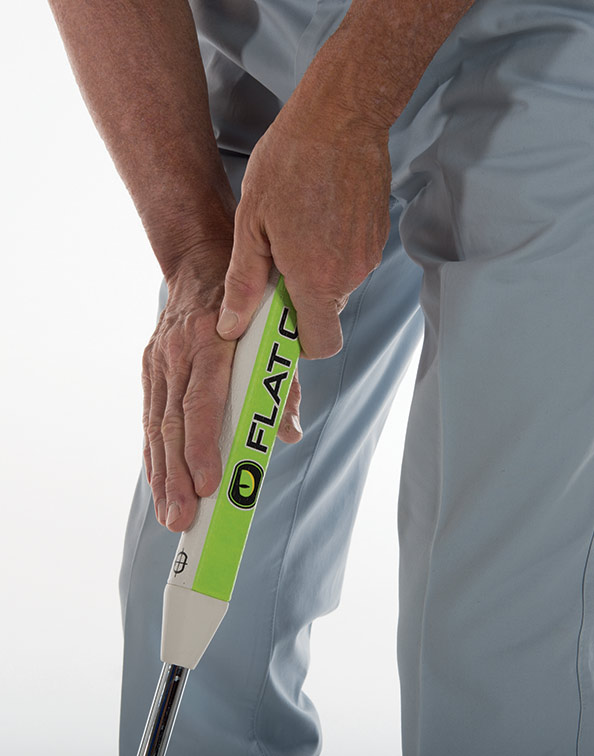… & how to fix them.
If you want to play better golf and lower your handicap, you need a plan. A goal without a plan is just a dream, and that’s where most people end up with their games. They’re dreaming.
Instead, how about taking action and figuring out what it’s going to take to improve? That process starts with identifying your biggest miss – the one that causes the worst problems round after round. Unless you address that issue now, you’re going to be pretty much the same golfer next summer as you are today.
Here we’re going to talk about five of the common big misses in golf, and what you can do to overcome each of them. Fix your big miss and stay out of trouble, and your scores will drop fast.
1.
Miss: The Dreaded Shank
Fix: Maintain your distance from the ball
First, let’s blow up the major misconception about the shot that goes flying low and right. It isn’t because you hit the ball off the toe. A shank comes from the opposite problem: hitting off the hosel. It can happen for a few reasons. The most common one is when you’re too close to the ball, whether you start out that way or you fall towards the ball on the downswing. You also could be swinging too much around your body in the backswing, which can make you swing outward too much on the downswing, exposing the hosel to the ball.
Two quick fixes: First, check that you stay in your address posture as you swing through by using your shadow. Set up so your shadow is easy to spot and take some swings, making sure you aren’t getting closer to the ball with your body or head as you swing. Second, put a headcover just outside the ball and hit shots without bumping the headcover. These drills will show you instantly that you’re doing the right (or wrong) thing.
2.
Miss: The Big Driver Slice
Fix: Swing the Arms Faster Than the Hips
Drivers cause the biggest misses, literally and figuratively. It’s the club that goes the farthest and has the least loft, so it produces the biggest curves. And failing to get off the tee causes the worst problems with scoring because you’re playing catch-up the rest of the hole.
Slicing is the common miss for average players, and it happens because at impact the face is open relative to the path of the swing. The fastest way to change that is to feel like your body is slowing down through impact while you speed up the release of the clubhead with your hands and arms. This will get the face closing like it is in this photograph [below].

If you’re fighting the opposite problem – a hook – apply the opposite fix. To keep the clubface from closing so much through impact, feel like your body is rotating faster into the follow-through. Another good thought is to speed up your lead arm through impact. That’ll help hold the face more open.
3.
Miss: The Fat Iron Shot
Fix: Find Out If You’re Steep or Shallow
Fat shots can be tough to diagnose because they can happen from a steep angle of attack (smashing into the ground) or a very shallow one (hitting the ground too early). If you tend to take big divots, practise holding the clubhead off the ground and making swings like you would to hit a baseball or a golf shot off a very high tee. That will promote a more around-the-body versus up-and-down swing.

If you tend to hit fat shots with a shallow angle of attack –a common mistake with longer clubs like hybrids and fairway woods – it’s happening because the bottom of your swing is behind the ball. To fix this, focus on shifting to your front foot as you start the downswing [above] and swinging all the way around so your chest is facing the target at the finish. The bottom of your swing arc will move forward, and your swing direction will be more toward the target than inside-out.
4.
Miss: Inconsistent Pitching
Fix: Use the Bounce on Your Sand Wedge
Consistency and forgiveness are the two most important factors you want to have in your greenside game. If you can hit the same shot every time, you’ll get great at controlling your distance. And if you use the club the way it was designed, the bounce on the bottom of the clubhead will help you with forgiveness. It’ll slide through the grass and help you produce a good shot even when you don’t make perfect contact.

On pitch shots, the sand wedge is usually your best choice. It has plenty of loft and forgiveness built right in. To make the bounce work, open the face slightly at address. Set your weight equally between your feet, and don’t artificially narrow your stance – that moves your centre forward and promotes a steep swing. Instead, make a downswing that feels as if you’re throwing the club so the head and the shaft get to the ball at the same time. If your hands get way ahead, the club’s leading edge will dig, and you’ll struggle to make solid contact.
5.
Miss: The Putting Yips
Fix: Experiment with Grips – and Gripping
Numbers don’t lie. For more than 10 years, we tested thousands of players in my schools and found that 26 per cent had some kind of yip problem in their putting. They weren’t in full control of the putterface or acceleration through impact.
In most cases, it’s something relatively easy to handle. The yip problem often comes in one hand or the other on the grip. Simply changing how that hand holds the club – by moving to a claw grip, for example [below] – can often solve the problem. There are variations on the claw, and the right one for you is the one that reduces the yip and gives you the best feel.

You also might try replacing the grip on your putter with a fatter one, which gives a different feel in your hands and reduces hand action through the putt. You see them all over the US PGA Tour – and it isn’t because those guys have big hands. Point is, don’t be afraid to change things up.

